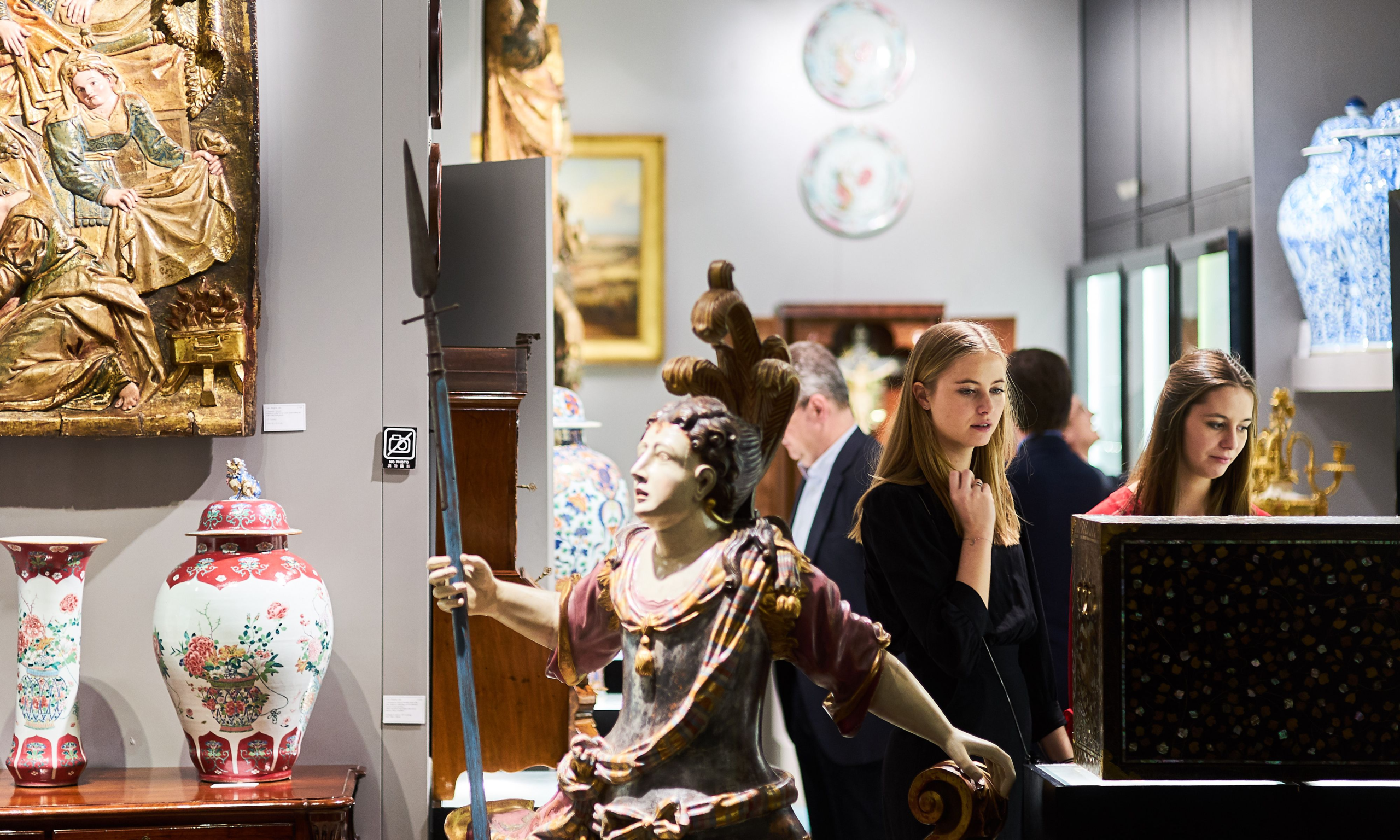This year's Tefaf New York will host 91 stands at the Park Avenue Armory. Courtesy Tefaf
After its Maastricht edition attracted more than 50,000 visitors and members from around 250 museums in March, Tefaf New York (11-16 May) returns to the Park Avenue Armory to kick off the busiest time of year for city’s art scene. Smaller in scale than its Dutch sister, which this year boasted around 270 exhibitors presenting an encyclopaedic array of objects, the 91-stand fair skews heavily toward modern and contemporary material in art and design.
After initially launching stateside with two annual iterations in New York, the fair eliminated its autumnal edition after the pandemic to focus on spring, when it coincides with the marquee auctions of modern and contemporary art at Christie’s, Phillips and Sotheby’s, and fairs including Independent, Nada New York and Frieze York.
Minjung Kim's Void in Fullness (2003) Photo courtesy of the artist and Gallery Hyundai
“Showing 7,000 years of art, as we do in Maastricht, has been difficult to achieve through around 90 exhibitors,” says Hidde van Seggelen, the chairman of the fair’s executive committee. He adds that the venue’s positioning on the Upper East Side has been a major selling point for participating galleries. “Most of our dealers consider the New York edition as being in the centre of a large client base, while Maastricht is a destination fair,” he says.
A particular strength of the fair’s New York edition is an intergenerational or pan-historical curatorial approach. Dealers are juxtaposing modern and contemporary pieces with objects from previous centuries, drawing out time-worn themes and throughlines. Belgian gallery Axel Vervoordt, for example, will pair a Bayon-style late-12th century head of a deity from Cambodia with an abstract, monolithic work by Anish Kapoor from 2002. Both objects—the sandstone head modelled on Khmer ruler Jayavarman VII and Kapoor’s limestone and pigment work—aim to conjure transcendence through stone’s permanence.
"Kapoor succeeds in giving the void a physical, tangible appearance, above the division between everything and nothing, masculine and feminine, the interior and the exterior,” says Bert Melkebeek, an art historian and archaeologist for the gallery. “It is this very same transcendent quality that is also immediately apparent—although it was made centuries ago—about the head from the Khmer Empire in Cambodia with the superb quality, a benign smile and the downcast eyes in total tranquillity.”
Cross-cultural resonances will be a focus of Gladstone’s Tefaf stand, too, through a display of Robert Rauschenberg’s Thai series of drawings from 1983, which trace the artist’s travels across Thailand as well as Sri Lanka and Japan. The works incorporate printed materials from Thailand and Rauschenberg’s own photographs of Sri Lanka over gold-edged Japanese dedication boards. Gladstone, which recently announced its representation of Rauschenberg’s estate, will concurrently host an exhibition of his Spreads and Scales series at its flagship space on West 21st Street.
Sans titre (1965) by Shirley Jaffe Courtesy of the Shirley Jaffe estate and Galerie Nathalie Obadia
Another Chelsea heavyweight, Pace, aims to make a splash at the fair with a solo stand devoted to Louise Nevelson. Besides quintessential examples of her black-washed monochromatic wooden sculptures, the gallery will show 11 mixed-media collages created between the 1950s and 80s that will shed light onto a less familiar facet of Nevelson’s practice.
The fair’s prevalence of stands devoted to female artists (and organised by female dealers) is another of Tefaf’s strengths, according to Van Seggelen. First-time exhibitor Nathalie Obadia will display abstract paintings by Shirley Jaffe; the Paris- and Brussels-based gallery’s timely display of the American artist’s electric gestures in colour coincides with Kunstmuseum Basel’s current solo exhibition devoted to the late abstractionist. Seoul’s Gallery Hyundai, meanwhile, will highlight a very different approach to abstract painting: Minjung Kim’s textured compositions over mulberry hanji paper that carries ghostly traces of a burn from a candle.

